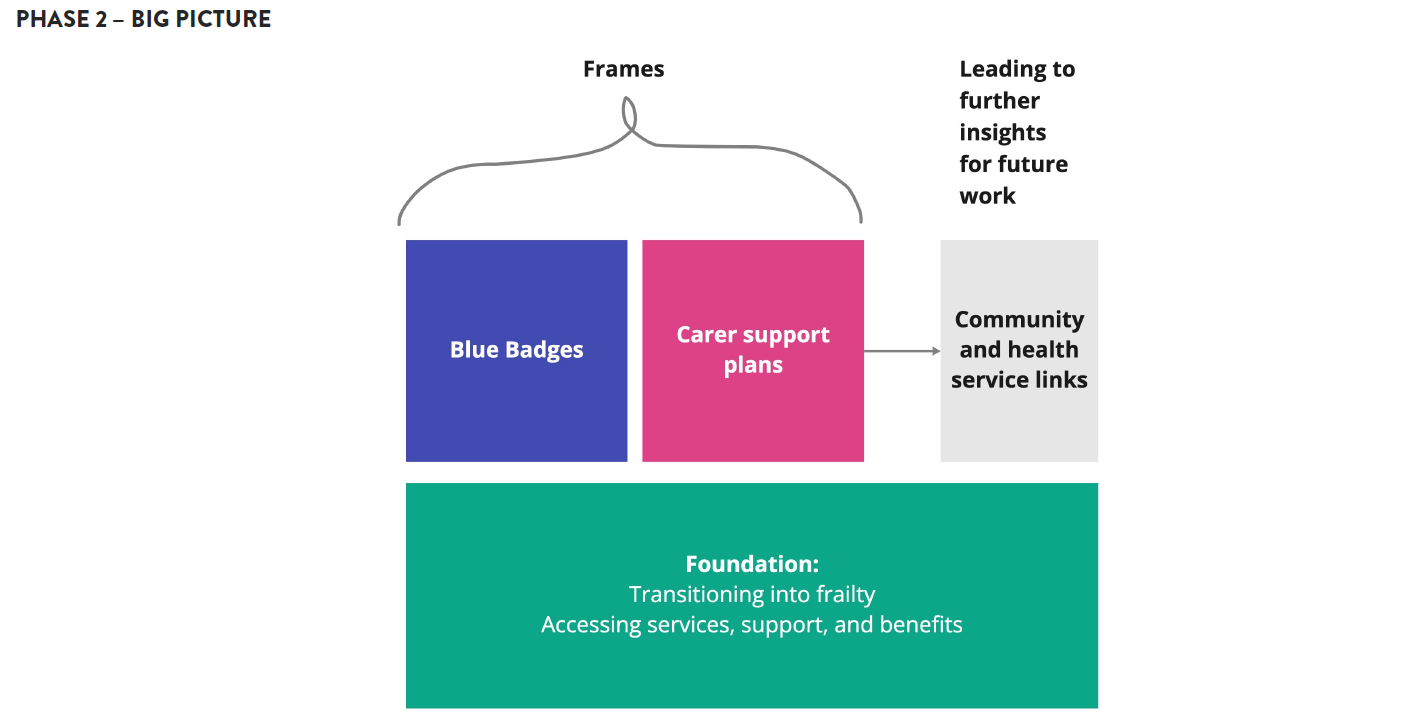Getting ‘stuck’ and ‘unstuck’: Identifying and addressing challenges with progress
Midlothian Health and Social Care Partnership aimed to transform traditional models of care to enable the increasing numbers of people living with frailty to achieve their best possible quality of life.
What did you do?
Despite the challenges of the pandemic, we made great progress through the Discover phase on our user research.

From these engagement activities, we identified four areas that were important:
- New ways of working
- High value conversations
- Navigating health and care
- Information and insight to support self management
As we neared the end of the Define phase, we found that we were facing a number of challenges. COVID-19 restrictions created a number of challenges for us in delivering the project, and even though we had been creative and adaptive in our user research and engagement, the circumstances did mean that many people were working in extended functions to deliver multiple priorities.
We initially framed our ‘how might we’ statements around the concept of a ‘navigator’. However, ‘navigator’ in this context meant different things to different people: is it a person or a digital application? There was some concern that it might disempower people living with frailty. Within the HSCP culture, it was easy to interpret ‘navigator’ as a person, but at this point it was meant to be a design concept.
With changes in staffing and leadership, we took the opportunity review and refocus, by returning to the user research, and realigning the findings to how we support people.
Essentially, this is stepping back to step forward. This was useful because we realised that we needed to reframe our thinking and the way we expressed the problems we were trying to solve.
Our research highlighted the needed to give people power and help them through the system, but not to frame as navigation or a role. Instead, we needed to solve a problem, and we identified two major themes to move forward: helping resolve problems people were having with blue badge applications, and improving carer support planning.

Key learning points
Organisational culture can impact the way that your messaging ‘lands’. This can particularly be an issue when defining a problem and moving into the more open ‘Develop’ phase. Make sure that your problem statements are focused on problems, not possible solutions.
Don’t be afraid to go back to go forward. But do so with purpose – return to the grounding of the user research, and with the aim of moving forward again.
